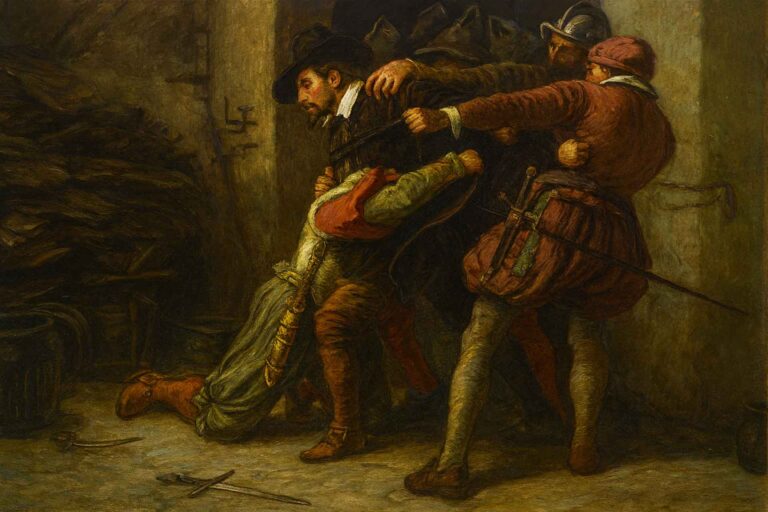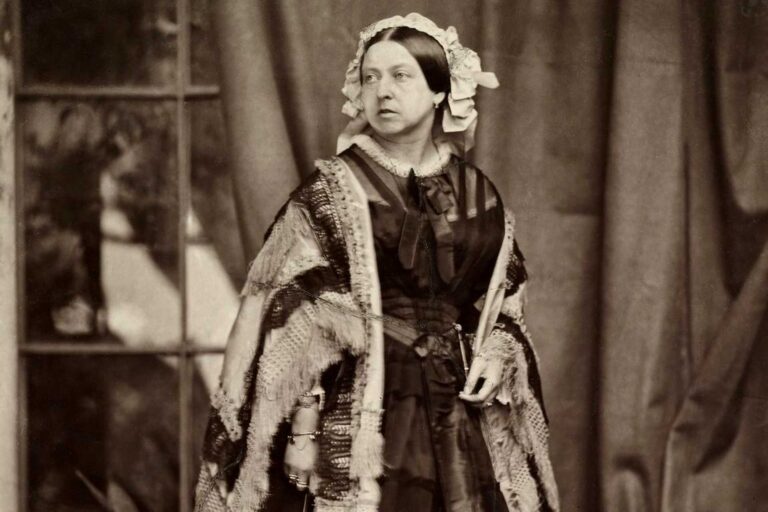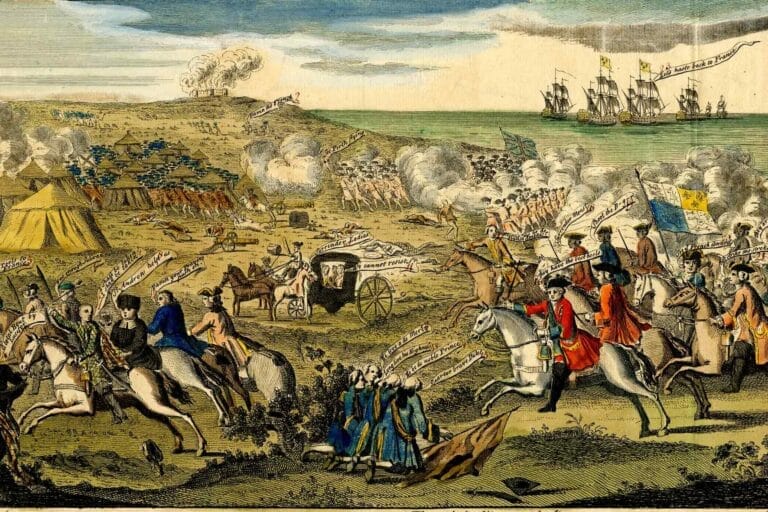Grace O’Malley the Pirate Queen of Ireland
Gráinne Mhaol, also known as Grace O’Malley, lived in 16th-century Ireland when clans were at war, the English from across the water were trying to conquer them, and no one paid much attention to the women. Grace dared to break the rules. On the west coast of Ireland, she was raised a member of a clan that traded and raided with and against other clans. Her rise to fame (or infamy) was as a leader, sea captain, and pirate, and she remains a fascinating character from Irish history centuries later. Grace O’Malley’s life was a legend, made up of actual events and tall tales.
This article will take you on Grace O’Malley’s journey, the path from a wealthy family to warring clans and pirate queen. As England tightened its control over Ireland, Grace would set her own course, one of command over men in raids and battle, of forging alliances and battling enemies, and of meeting Queen Elizabeth I face to face.
Early Life and Noble Heritage
Grace O’Malley was born circa 1530, into the Ó Máille clan, one of the most powerful seafaring families in the world. The O’Malleys ruled over a particularly inhospitable stretch of coastline in the west of Ireland, in County Mayo. But while most Irish families of the time gained their wealth and influence from their lands, the Ó Máille clan had done so through the Atlantic. They were traders, sailors, and on occasion, pirates, navigating both the seas and the capricious politics of Irish clans with equal aplomb. Grace O’Malley would be immersed in this world from a young age.
Grace’s childhood was likely a singular one for the time, informed by her unique circumstances and budding temperament. As a girl, she had an indomitable spirit and a preoccupation with sailing ships. While the daughters of noblemen learned needlework and household management, Grace knew the ways of the sea. Her father, Eoghan Dubhdara Ó Máille, was a well-regarded chieftain and ship captain who went on many voyages along the coast of Ireland, to Spain, and Scotland, with Grace’s mother and siblings. According to legend, the young Grace O’Malley wept and begged one day to be allowed to join one of these voyages, only to be rejected by her father, on account of her long hair tangling in the rigging.
Legend further has it that Grace cut off all her hair to make a compelling enough case to her father to join the crew on their journey. Grace’s mother supposedly gave in to her daughter’s demands, on this condition, and thus she became known as “Gráinne Mhaol,” or “Bald Grace,” a nickname that would stick with her for the rest of her life. While modern historians are often skeptical of this tale, considering it apocryphal, it nevertheless speaks to Grace’s sense of will and determination, which later characterized her life. Even as a child, she sought to transgress the roles assigned to her as a woman.
Grace spent her formative years on the wild and beautiful coast of Connacht, raised as a child of the sea. She was schooled in navigation and trade, as well as in how to lead people. Clan life was one of perpetual negotiation, and the sea exacted both bravery and precision from those who tried to traverse it. Grace would go on to use those skills, not only in commanding ships, but in dealing with foreign merchants, hostile clans, and eventually, the English. Raised in a seafaring culture, Grace was groomed for power. She would not simply be a wife and mother, as most girls were. She would rule.
The O’Malley clan traced their lineage back to ancient Irish kings, and, due to their independence from the central government in Ireland, they were able to thumb their noses at English authority longer than many of their counterparts. The Ó Máille clan controlled several castles and dozens of ships, and would tax any that passed through their waters. Grace grew up in a world of such privilege, such wealth, such opportunity, and thus developed a sense of entitlement and responsibility that could only come with being born into power. The sea was her home and her battlefield.
Grace O’Malley grew up learning the skills of a male-dominated world. This environment, in which she was raised, informed the life she would later lead not simply as the daughter of nobility but as an extraordinary woman on the Atlantic. Before she became an icon of Irish resistance, Grace was shaped by the salt air, the loyalty to her clan, and a desire to master the sea.
Rise to Power
Grace O’Malley married young, as was the custom for girls of her time and status. Her first husband was Donal O’Flaherty, the heir to another seafaring dynasty, also based in Connemara. The O’Flahertys, like O’Malleys, were feared and respected as fierce and independent, ruling large tracts of the west coast and raiding their enemies and merchant vessels. Grace soon became a full participant in her husband’s piratical activities. She demonstrated not only courage but a keen aptitude for leadership. She gained the trust and respect of O’Flaherty sailors and lieutenants, learning from the finest. Grace also solidified O’Flaherty’s alliances and negotiated truces where she could, thus building upon and expanding the existing fleet.
Donal was a fierce warrior, quickly earning the nickname “Donal of the Battles”. Grace, however, was the one making alliances and forging truces. She was the one who most efficiently buttressed the O’Flaherty fleet, growing it in size and scope. Donal was killed at a skirmish over Cock’s Castle, one of the O’Flaherty’s power bases. Grace did not fade into the shadows, though. On the contrary, she would not only lead the defense of the castle but eventually assume power over it, literally breaking through its walls after mustering her forces. Grace was seen not only as a chieftain’s widow but as a leader in her own right.
In the years after Donal’s death, Grace returned to Mayo and to the sea. She assumed command of her father’s fleet and set about expanding her power and influence along the west coast of Ireland. Grace O’Malley established tolls, launched raids, and made her name known as she developed and dominated the local waters. She commanded as many as 20 ships, carrying supplies and loyal crews that followed her lead. Grace would operate out of Clare Island and Clew Bay, sailing between fortified islands and castles that served as bases for the tolling trade and dominated the surrounding coast.
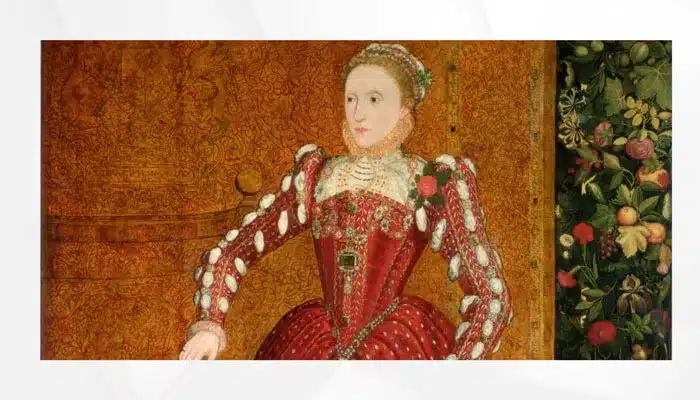
Grace O’Malley’s increasing power and her second marriage soon cemented her influence. She wed Risdeárd an Iarainn Bourke, chieftain of the Bourke clan, a political marriage as much as a personal one. The Bourkes had traditionally operated inland, but with this marriage, Grace would expand her territory and influence eastward, thus cementing another key alliance. The marriage, though, was to be short-lived, and Grace would quickly go her own way, but not before assuming command of Bourke’s castle at Rockfleet. The castle would be one of Grace O’Malley’s principal seats of power.
Grace O’Malley would be quick to shed her husband’s name after they parted, and many of her sailors would still call her “Lady Bourke” throughout her life. Her second marriage was still, by and large, a success, though. Her power and influence extended to key inland regions, her connections and alliances were strengthened, and she was now known and feared for miles inland as well as out to sea. In a period where the Irish lords were losing ground to the English power and influence, Grace O’Malley was gaining ground in a period of shrinking margins. She was one of the few who could not only hold her own but expand her influence and domain.
Grace O’Malley, at her peak, was no longer simply the daughter of a chieftain or the widow of a warrior. She was a pirate queen, a clan leader, and a major political player along the Irish Atlantic coast. Grace O’Malley, at her peak, was no longer a woman, as far as the world was concerned. She was Grace, the Pirate Queen.
Life as a Pirate and Clan Leader
Grace O’Malley was born in a family of sea raiders, and upon inheriting her family’s fleet, she established a stronghold at Clew Bay on the west coast of Ireland. Clew Bay was a large body of water with over 100 islands. It was the ideal location for launching sea raids and collecting tolls from passing ships. O’Malley ruled the waters of Clew Bay and the lands around it. She was both a chieftain and a naval commander, leading her fleet in battle and raids. Her ships were fast and heavily armed, allowing her to launch surprise attacks and retreat quickly into the labyrinthine coast.
Grace’s fleet soon became feared for its raids along the Irish coast and beyond. She not only targeted rival clans but also English merchant ships, looting cargo and demonstrating her power at sea. These raids were not mere piracy but a means of asserting control and acquiring wealth in a contested region. Her crew was loyal and seasoned, respecting her leadership and willingness to stand on the front lines. She fought alongside her men, sharing in their perils and spoils.
In addition to her piratical exploits, Grace maintained her duties as a clan leader. She arbitrated disputes, defended her territory, and enforced law and order among her allies and vassals. Her rule was a blend of Gaelic tradition and the exigencies of the time. She balanced the need for martial strength with the diplomacy required to navigate alliances and enmities.
Grace’s power was not solely derived from her martial prowess. She also maintained her influence through negotiation, trade, and strategic marriages. She settled disputes, brokered alliances, and traded with merchants from across the Irish Sea. Her seafaring lifestyle provided her with access to foreign goods and news, which she leveraged to support her clan and solidify her position. As a pirate and a matriarch, Grace O’Malley defied the boundaries of both outlaws and nobility.

Grace’s success was contingent on maintaining a balance between aggression and control. Excessive violence could provoke retaliation, while restraint could undermine her authority. She navigated this balance with a unique combination of bravery, strategic acumen, and charisma. Whether leading a raid or presiding over her court, she commanded respect and wielded power with an understanding of the dynamics of her world.
Grace O’Malley was remarkable not just for her daring but for her ability to command in a world where women rarely held power. Her life as a sea-raider was not a rejection of tradition but an extension of it, molded by Ireland’s special relationship with the sea and its history of independent clans.
Conflict with the English Crown
Grace O’Malley’s autonomy faced challenges as the English presence in Ireland tightened during the late 1500s. Her seaborne raids, a mainstay of Gaelic clan conflict and survival, were now under scrutiny. Targeting English ships and settlements, Grace found herself in open conflict with a colonial power that branded her a pirate and a criminal. Her actions and influence in the West were seen as a direct threat to the Tudor campaign to subdue and control Ireland.
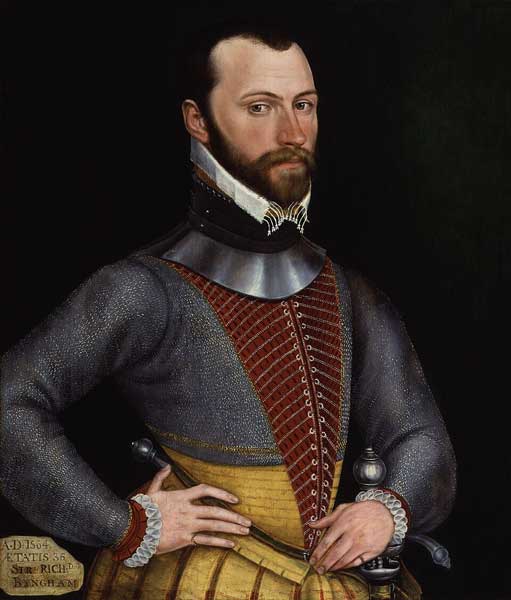
Sir Richard Bingham, the English governor of Connacht, was one of Grace’s most relentless adversaries. Appointed to restore order in Connacht, Bingham viewed her piracy as an affront to the crown. He seized her land, persecuted her family and allies, and hunted her like a wild animal. Bingham painted her as a constant rebel in reports to Queen Elizabeth I, calling her “nurse to all rebellions in the province for this forty years.”
Grace was not without fault herself. She was imprisoned by other clans and later by the English. At one point, her son and half-brother were held hostage in an attempt to gain leverage over her. She was undeniably beaten down by the pressures of state and clan warfare, sometimes by her own doing. Her recalcitrance would see her return to England as a prisoner on more than one occasion. Despite this, Grace would not completely capitulate to English demands. Her resolve remained strong, and she continued to make a stand wherever she could by force of arms or letter.
The English advance into Ireland unsettled a status quo that had endured for centuries. Colonization efforts, raids, and tariffs siphoned off resources from the native economy. As trading networks were disrupted and depopulated, clan leaders like Grace saw their influence wane. Garrisons, fortifications, and courts of law began to chip away at the power base Grace had built up throughout her reign. Her castles were occupied or attacked, her income from maritime tolls disappeared, and her fleet was reduced.
Grace O’Malley continued to fight against the English incursion into Ireland for as long as she was able. She petitioned the crown directly and refused to bow down or back down to local English officials, whom she called “the enemies of your majesty’s grace.” Her resistance to the English Crown at that time was strategic, self-preserving, and educational. Grace’s defiance made her into more than a local warlord. In challenging the power and will of the English state, Grace O’Malley had transcended the role of clan leader to become a full-on political threat. Her resistance made her an icon of Irish defiance and sovereignty in the face of colonization.
Grace O’Malley’s Meeting with Queen Elizabeth I
By 1593, Grace O’Malley’s world had been turned upside down. Her lands had been attacked, her revenue had been reduced through English interference, and Sir Richard Bingham had had her son Theobald imprisoned. Desperate to secure what was left of her power and her family, Grace took a bold and unprecedented step – she sent a letter to Queen Elizabeth I asking for an audience.
It was an astonishing thing for an Irish chieftain and a pirate queen to do. To request an audience with the head of the English crown. Grace did it, however, and the queen responded. It was an incredible meeting, the two women sitting down to discuss their differences in Greenwich Palace.
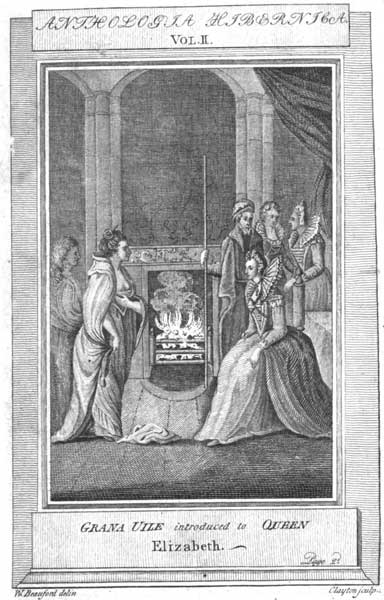
On the one side was Elizabeth, a queen who had secured her place in history, and on the other was Grace, an Irish chieftain and pirate queen. It was an unusual meeting of equals. Two women sat together in the 16th century, when the public presence of women in the Western world was generally frowned upon. Elizabeth was in her sixties, and Grace was a little older, but both had shown their strength. Grace came in her best clothes and, according to some accounts, refused to bow or doff her hat, asserting that she had no queen in Ireland, only in England. The two spoke in Latin, a language neither would have considered foreign.
The women, while from different worlds, found common ground and spoke. Grace requested the release of her son and the restoration of some of her seized goods. She argued that her raiding was part of Irish custom, and that she would continue to pay and support the crown so long as she and her family were respected. Elizabeth was somewhat won over by Grace’s actions and agreed to some of the requests put to her. Theobald was released, and Grace was allowed to resume her maritime activities (provided she operated within certain limits).
There is one particularly well-known tale from the meeting. It is said that Grace sneezed at some point during their conversation. Several accounts tell of this tale, which, according to legend, was followed by Grace asking Elizabeth for a handkerchief to cover her nose, as no one had offered her one. She then, as the story goes, threw the used handkerchief into the fireplace in front of the court. Grace had not acted in rudeness but in Irish custom. In Ireland, a used item was considered unclean and was meant to be destroyed rather than reused. The story is likely true in part or in whole.
Grace O’Malley’s meeting with Queen Elizabeth I is one of the most powerful stories in her life. She did not win all her battles that day, but she won enough. She had her son returned to her, and a small part of her position and dignity restored. It was a high-water mark in her life, and one of the few times an Irish leader was able to approach the English crown in any position of strength. The meeting between these two fascinating women has become a part of Irish lore.
In a world where few women held power, the meeting was unique. It brought together two of the strongest people of their age, two women who had been shaped by two different worlds and cultures, yet who, in that moment, were equals. Grace did not return to Ireland defeated. She returned with dignity, a reassertion of her authority and a place in history.
Later Years and Death
Grace O’Malley left her audience with Queen Elizabeth I and returned to the west of Ireland with a reprieve. The release of her son, Theobald, and partial restoration of her property allowed her to continue as chieftain of her clan and steward of the ships that remained in her possession. The process of English expansion into Ireland, however, continued. More garrisons were built, local lords were disarmed, and the rights of traditional Gaelic leaders were slowly eroded under English law.
Grace did her best to continue her resistance, however. In her old age, she helped her sons defend the territories of her clan, and was said to have participated in attempts to maintain local autonomy. She may no longer have sailed the seas in combat, but she was a figure of political strength who commanded the loyalty of others. Her life experience, her reputation and her resilience made her an icon of Irish pride at a time of increasing imposition from London.
As years passed, however, her influence waned. Younger figures rose, and the political climate was changing. The Nine Years’ War of 1594 to 1603 was the last significant Gaelic resistance effort against English rule, and although Grace was not directly involved in that conflict, it coincided with the previous years of her life and marked the passing of the world that she had once ruled. She likely observed with a heavy heart the gradual passing of the culture she had fought so hard to defend.
Grace O’Malley is thought to have died around 1603, the same year as Queen Elizabeth I. It is a strangely similar end to two influential leaders in what was, for both England and Ireland, the close of an era. Elizabeth died in a royal palace, in the eyes of the world. In contrast, Grace likely died in one of her own fortresses along the wild Atlantic coast – perhaps Rockfleet Castle – with the ocean as a final companion.
The English officials did not make a record of Grace’s death, perhaps because they had few dealings with her in her final years, but it also could have been a deliberate omission. Grace O’Malley was a constant irritant to the English power in Ireland, a symbol of Gaelic autonomy that would not quietly fade away. It was an omission later corrected by the preservation of her story in Irish oral tradition and its rediscovery by later historians. The world around her was changing, but Grace O’Malley remained fiercely independent to the end.
In the years and centuries since her death, Grace O’Malley’s life has come to define an era and a people. Grace was a chieftain, a mother, a pirate, and a rebel, and her influence and legacy have never faded. She has become an iconic figure in Irish history, not simply because she was an influential leader in her own right, but because she stood at the point where two cultures met and exemplified the best of both. The years after her time may have been quieter, but her memory never faded, and her strength still resonates across the waves.
Legacy and Historical Significance
330/2500 WordsHumanizeCheck for AI
Grace O’Malley’s legacy lived on through oral history, long after she passed away. Her life story became part of the folk tradition, with details evolving and growing with each telling. She was celebrated as a defiant figure in Irish history, a powerful woman who commanded her ships and clan with strength and independence, even in the face of English authority.
Her life became a kind of local legend in Ireland, remembered as an example of resistance to foreign rule. She was proof that the old Gaelic lords, and the women who led with them, had not been entirely subdued by English influence. Her reputation for sea-borne daring and pirate raids was immortalized in folk tales.
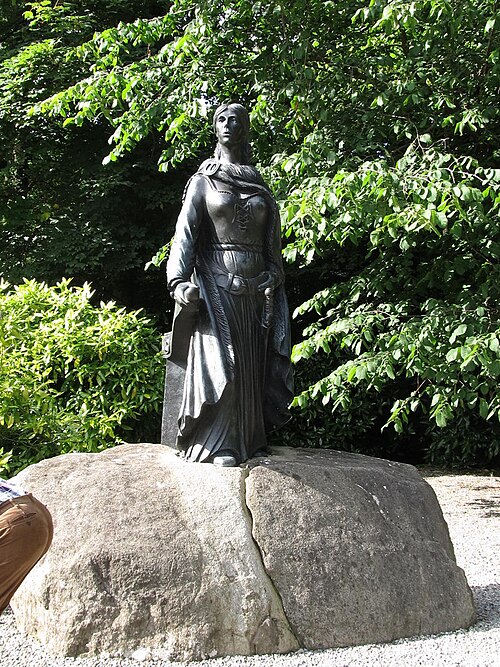
Historians, for many centuries, either completely ignored Grace or treated her as a romantic outlaw. Over the past hundred years, however, there has been an effort to uncover and reassess her life. Sources have been more carefully reviewed, including state papers, clan records, and written accounts of her 1593 audience with Queen Elizabeth. Through these, a new picture has emerged of a skilled and able leader who was adept at navigating a period of political and cultural upheaval. She was not so much a ruthless pirate as she was a cunning player of political games.
Grace O’Malley’s cultural legacy also continues to expand and thrive. She is the subject of many biographies and historical novels, and she is also featured in several folk songs, particularly in the Irish tradition. Statues of her likeness can be found in the Westport House, and her name is kept alive in local festivals and maritime commemorations. In schools, she is now studied as a real, flesh-and-blood woman who was important in both Irish and British history.
She has also been adopted as an icon by more modern feminist movements. Grace O’Malley was a woman who not only commanded her ships and fought in battles, but also negotiated with a queen and led and protected her clan. She defied and subverted the expectations of how women were to behave in both history and legend. Her legacy is now a symbol of women in power, even in times that tried to ignore or silence them.
Grace O’Malley’s story is something of a bridge between history and legend, fact and fable. She lived in a time of change and upheaval, yet she created a space for herself and her family through daring and fearlessness. Whether remembered as a pirate queen, a rebellious sea captain, or just a clan leader with a way with words, Grace O’Malley’s story endures. It is a reminder that individual acts of defiance can still resonate long after the empires that sought to contain them have faded.
Conclusion
Grace O’Malley was as unlikely a character as any other in our history. A woman in a time when there were very few in power, Grace commanded fleets, led clans, and negotiated with the most powerful king in Europe. Grace charted her own course through the ages, across oceans, across borders, and through history.
Grace is in the modern imagination still a larger-than-life character for all who value fierce independence and willfulness in the face of convention. To this day, she inspires those who challenge the status quo and fight against oppression, particularly women, who are still seeking ancestors to look up to from history. Pirate, leader, or national icon; Grace O’Malley sails on.







